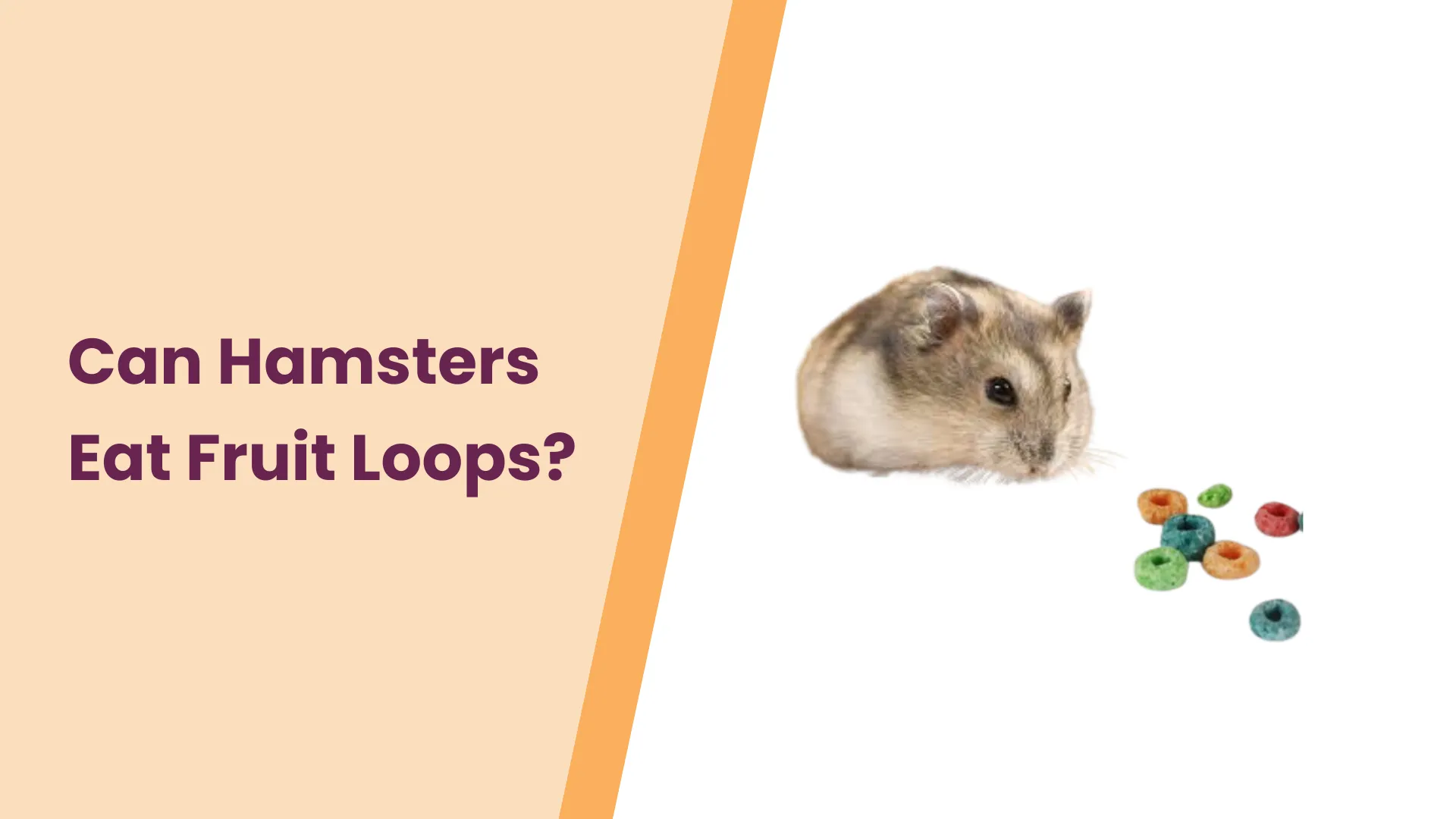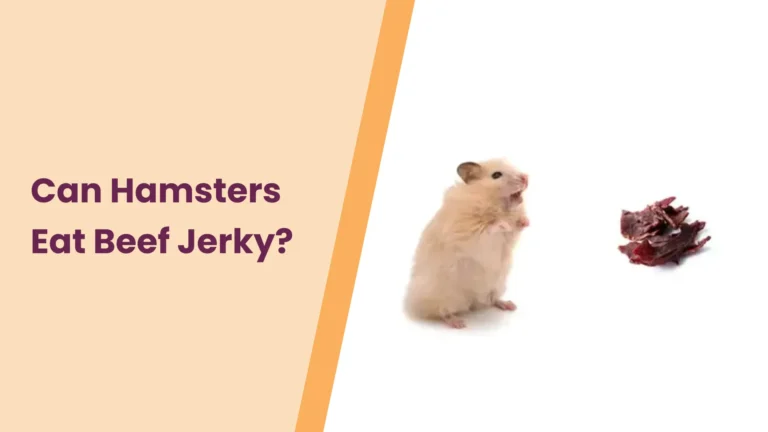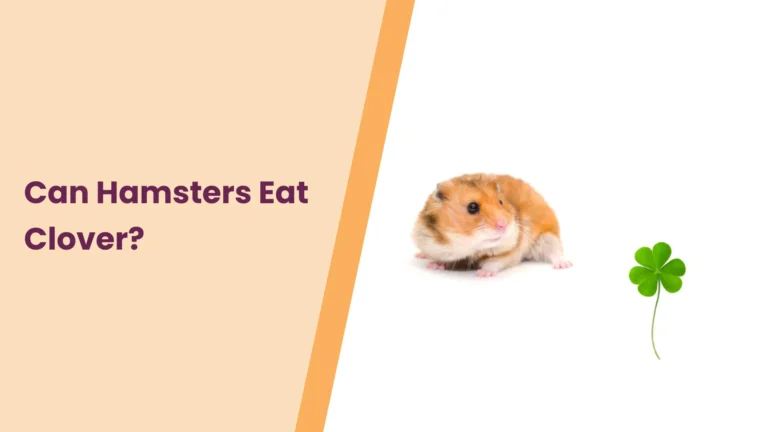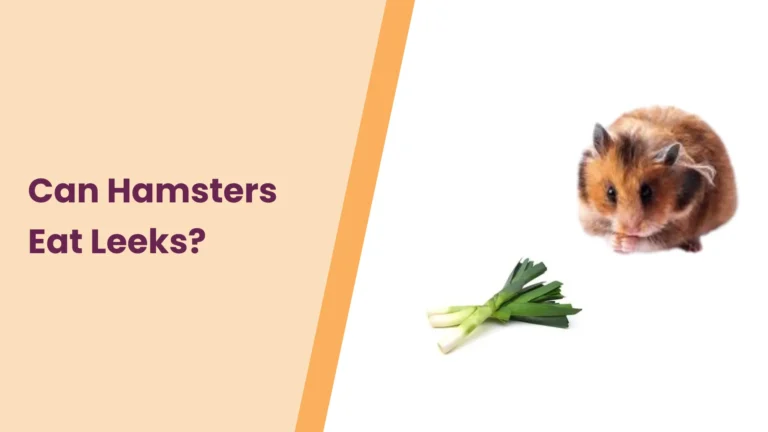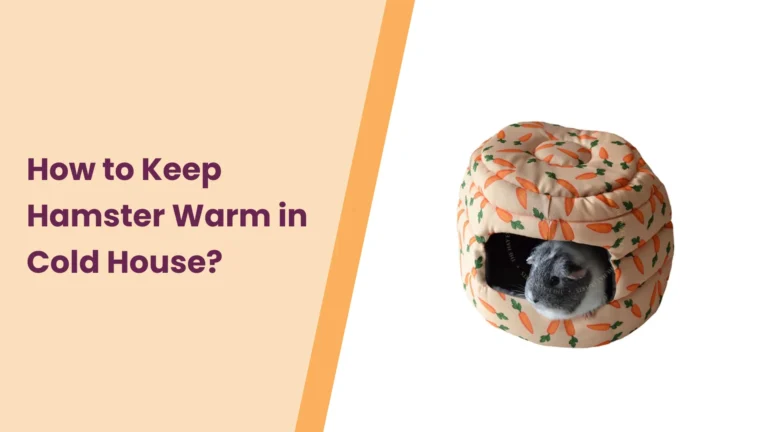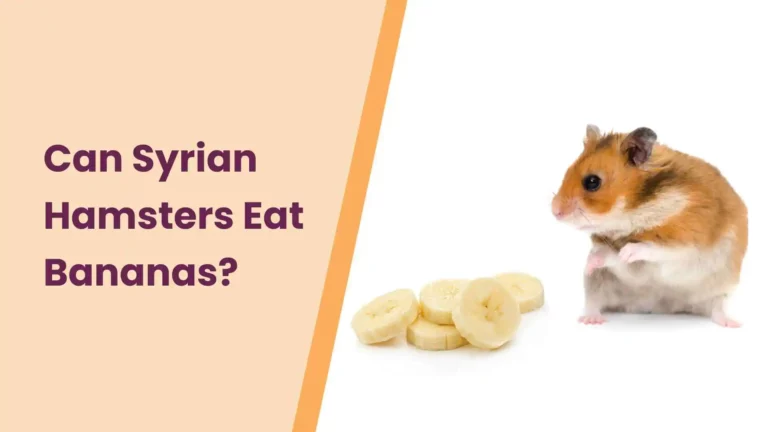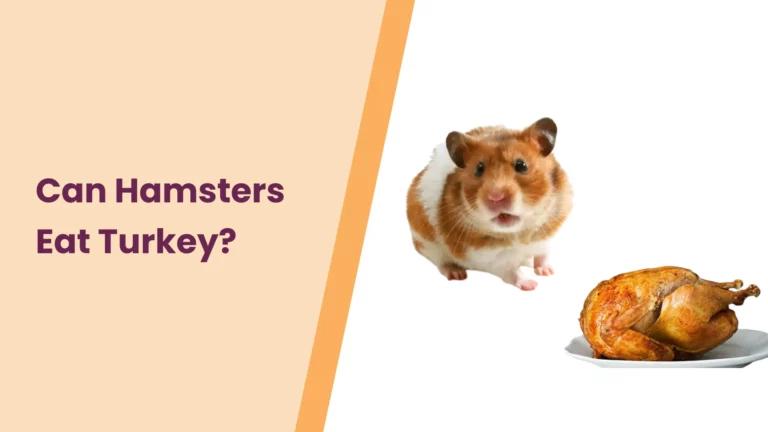Can Hamsters Eat Fruit Loops? – All You Need To Know
You’re enjoying a bowl of colorful and crunchy Fruit Loops, and your curious hamster gives you those adorable, pleading eyes. Before you share your breakfast with your furry friend, it’s crucial to ask the question: Can hamsters eat Fruit Loops? While the idea of treating your hamster to a mini cereal feast might seem charming, there’s more to it than meets the eye.
In this article, we’ll delve into the world of hamster nutrition, scrutinize the ingredients of Fruit Loops, and unravel the mysteries of whether this breakfast delight is a safe treat or a potential hazard for our tiny companions. Get ready for a journey through hamster health and happiness!
Understanding Hamster Diet: Nourishing Our Tiny Friends
Hamsters may be small in size, but their dietary needs are anything but trivial. A proper understanding of what fuels these tiny, energetic creatures is the first step towards ensuring their health and happiness.
Hamsters are omnivores, meaning their diet comprises a mix of grains, fruits, vegetables, and proteins. In the wild, they forage for seeds, insects, and vegetation. As responsible pet owners, it’s our duty to replicate this balanced diet in captivity.
In captivity, hamsters are often provided with commercial hamster pellets, which are formulated to meet their nutritional requirements. These pellets usually contain a mix of grains, seeds, and essential vitamins. While pellets form the foundation of a hamster’s diet, it’s equally crucial to supplement their meals with fresh fruits, vegetables, and occasional treats.
Striking the right balance ensures that our hamsters receive a well-rounded and nutritious diet that supports their overall well-being.
By understanding the natural dietary preferences of hamsters, we can make informed choices about the foods we offer them. Now, let’s turn our attention to a specific treat that often finds its way into our households: Fruit Loops. Are these colorful cereal rings a delightful addition to your hamster’s menu, or should they be kept strictly off-limits? Let’s explore further.
Fruit Loops Ingredients Analysis: Decoding the Rainbow Rings
Before we open our hearts (and hamster cages) to the possibility of sharing Fruit Loops with our adorable companions, let’s take a closer look at what makes up these colorful cereal rings. The ingredients list on the back of the cereal box can sometimes read like a scientific formula, and deciphering it is crucial when it comes to our hamsters’ well-being.
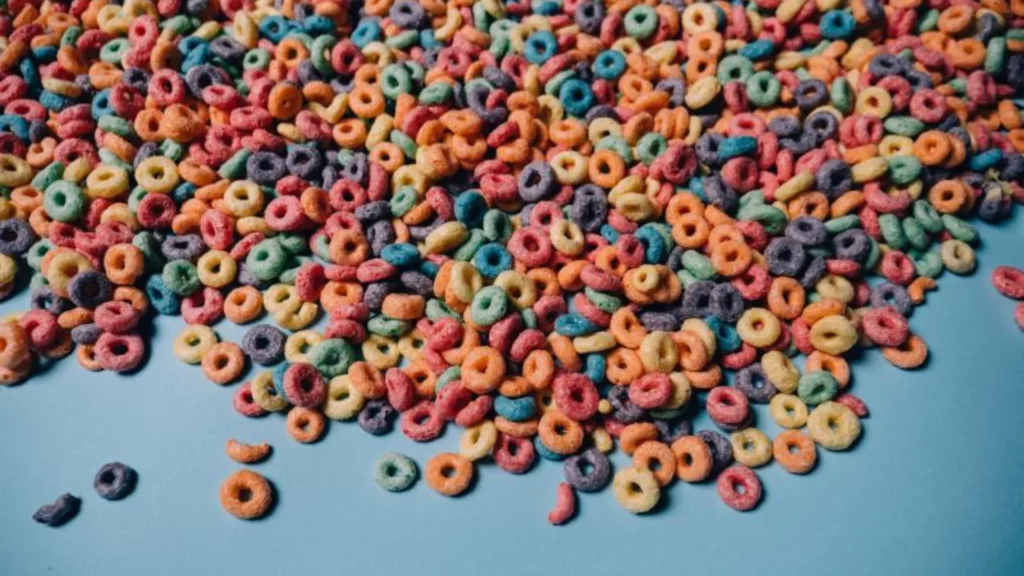
Fruit Loops are renowned for their vibrant hues and sweet taste, but within those enticing colors lie a myriad of ingredients, some of which may raise eyebrows in the context of hamster nutrition. Common components include sugar, artificial flavors, and food dyes, elements that may not align with the natural diet of our small, furry friends.
One particular concern is sugar content. Hamsters, like many small animals, are sensitive to high sugar intake, which can lead to obesity and related health issues. Artificial additives and food dyes, while harmless to humans in moderation, may not sit well with our hamsters’ delicate digestive systems.
As responsible pet owners, it’s essential to prioritize our hamsters’ health over the allure of colorful treats. In the upcoming sections, we’ll delve into whether these ingredients pose a genuine threat to our hamsters and if Fruit Loops can find a place in their menu without compromising their well-being. Stick around as we uncover the secrets behind the rainbow rings!
Can Hamsters Eat Fruit Loops? Debunking the Myth
Now that we’ve examined the colorful world of Fruit Loops and dissected their ingredients, the pressing question remains: Can hamsters indulge in these miniature rings of delight? The answer, unfortunately, is a no.
While our hamsters may gaze longingly at the vibrant colors and beg for a taste, caution is paramount. The sugar content in Fruit Loops is a red flag for hamster owners. Hamsters are predisposed to health issues related to high sugar intake, including obesity and diabetes. Additionally, artificial additives and food dyes, commonly found in these cereal treats, may pose risks to our hamsters’ sensitive digestive systems.
As pet owners, our priority is the well-being of our furry companions. It’s crucial to weigh the potential risks against the momentary joy of sharing a human snack. While a tiny nibble may not immediately harm your hamster, it’s the cumulative effect and the long-term impact on their health that should guide our decisions.
In the next sections, we’ll explore alternative treats that align more closely with a hamster’s natural diet and delve into the importance of moderation when introducing any new food. Stay with us as we navigate the delicate balance between indulging our pets and ensuring their health remains our top priority.
Nutritional Needs of Hamsters: Building Blocks of a Healthy Diet
Understanding what fuels our furry friends is key to providing them with a life of vitality and well-being. Hamsters, much like us, require a balanced and nutritious diet to thrive. Let’s break down the essential nutritional needs that form the foundation of a hamster’s well-rounded menu.
Proteins: Hamsters need proteins for muscle development and overall growth. High-quality hamster pellets often contain a good balance of proteins sourced from seeds and grains. However, supplementing their diet with lean protein sources like mealworms or plain cooked chicken is beneficial.
Fats: While hamsters need fats for energy, it’s crucial to offer the right kinds. Opt for healthy fats found in seeds, nuts, and some vegetables. Avoid fatty treats that might lead to obesity, a common concern for these pint-sized pets.
Fiber: Fiber is essential for proper digestion, and hamsters get this from hay, fresh vegetables, and certain fruits. Ensuring an adequate fiber intake helps prevent digestive issues and keeps those little stomachs happy.
Vitamins and Minerals: Hamsters require a variety of vitamins and minerals for overall health. Fresh fruits and vegetables are excellent sources of these essential nutrients. However, it’s crucial to strike a balance and not overdo it, as excesses can lead to health complications.
Hydration: Like any living being, hamsters need water. Ensure they always have access to fresh, clean water to stay hydrated.
Understanding these nutritional needs forms the basis for making informed choices about our hamsters’ diets. In the context of offering treats like Fruit Loops, evaluating how well they align with these nutritional requirements is key. In the following sections, we’ll delve deeper into the specifics, exploring whether certain treats can complement rather than compromise the health of our beloved hamsters.
Safe Alternatives for Hamsters: Delightful Treats Without Compromise
While the prospect of sharing a tiny piece of your snack with your hamster is undeniably heartwarming, not all treats are created equal. Fortunately, there are numerous safe and enjoyable alternatives that can add variety to your hamster’s diet without jeopardizing their well-being.
Fresh Fruits: Nature’s candy holds a special place in a hamster’s heart. Offer small, bite-sized portions of hamster-safe fruits like apples, pears, or berries. These treats not only satisfy their taste buds but also provide essential vitamins.
Vegetables: Just like us, hamsters benefit from the goodness of veggies. Carrots, cucumber, and leafy greens are excellent choices. Introduce new vegetables gradually to monitor your hamster’s reaction and ensure they don’t upset their stomach.
Herbs: Some hamsters enjoy the aromatic delights of herbs like parsley or cilantro. These not only make for tasty treats but also contribute to their overall well-being.
Commercial Hamster Treats: Explore the variety of commercially available hamster treats designed specifically for their nutritional needs. These treats often incorporate a mix of seeds, grains, and other hamster-friendly ingredients.
Homemade Treats: Get creative in the kitchen and prepare homemade treats for your hamster. Simple recipes using hamster-safe ingredients can be a delightful way to bond with your pet while ensuring they get a tasty and healthy snack.
Remember, moderation is key when introducing any new treats. Even the healthiest snacks can lead to issues if overindulged. By opting for these safe alternatives, you not only enrich your hamster’s diet but also provide them with a diverse range of flavors and textures to explore.
Portion Control and Moderation: Navigating the Hamster Treat Terrain
In the world of hamster treats, the golden rule is moderation. While treating your furry friend to delectable snacks is a joyous part of pet ownership, the key lies in finding the right balance. Let’s explore the significance of portion control and moderation in maintaining your hamster’s overall health and happiness.
Tiny Tummies, Big Impact: Hamsters are small creatures with equally small digestive systems. What may seem like a minuscule treat to us can have a substantial impact on their overall nutrition. Portion control ensures that the joy of treats doesn’t come at the expense of a well-balanced diet.
Obesity Concerns: Like many small animals, hamsters are prone to obesity. Excessive treats, especially those high in sugar or unhealthy fats, can contribute to weight gain and related health issues. By controlling portions, you play a crucial role in preventing these concerns.
Diverse Treats, Controlled Intake: Offering a variety of treats is fantastic for enriching your hamster’s life, but it’s equally vital to manage the quantity. Whether it’s a piece of fresh fruit, a nibble of a commercial treat, or a homemade delicacy, moderation ensures that each treat complements rather than disrupts their overall nutritional balance.
Observation is Key: Every hamster is unique, and their tolerance for treats may vary. Keep a keen eye on your pet’s reactions to different treats, noting any signs of digestive upset or changes in behavior. This personalized observation allows you to tailor their treat intake to their specific needs.
By embracing the principle of portion control and moderation, you can indulge your hamster in the delights of treats without compromising their health. In the upcoming sections, we’ll discuss the importance of consulting a vet before introducing new foods and unravel the secrets of maintaining a harmonious balance in your hamster’s diet. Join us as we navigate the fine line between indulgence and well-being!
Consulting a Vet: Your Hamster’s Health Ally
When it comes to making informed decisions about your hamster’s diet, the guidance of a veterinarian is an invaluable asset. Consulting a vet isn’t just a precautionary measure; it’s a proactive step toward ensuring your furry friend enjoys a life of optimal health and well-being.
Individualized Advice: Every hamster is a unique individual with specific health considerations. A veterinarian can provide personalized advice based on your hamster’s age, breed, and any existing health conditions. This tailored approach ensures that dietary recommendations align with your pet’s specific needs.
Introducing New Foods Safely: Hamsters, like any pets, may react differently to new foods. Before incorporating a new treat into their diet, seeking your vet’s advice can help identify any potential allergies or sensitivities. This proactive approach prevents unwanted health issues and ensures a smooth introduction of novel foods.
Addressing Health Concerns: If your hamster has pre-existing health conditions, a vet can guide you in selecting treats that won’t exacerbate these issues. For instance, hamsters with diabetes may require a different approach to treat selection to manage their sugar intake effectively.
Balancing Commercial and Natural Foods: A vet can offer insights into striking the right balance between commercial hamster food and natural treats. This balance is crucial for meeting your hamster’s nutritional needs while allowing for occasional indulgences.
Regular Check-ups: Regular veterinary check-ups are an opportunity to discuss your hamster’s overall health, including their diet. These visits allow you to stay informed about any changes in dietary recommendations based on your hamster’s evolving health needs.
By consulting a vet, you empower yourself with the knowledge needed to make informed choices about your hamster’s diet. In the subsequent sections, we’ll delve into the concluding thoughts of this exploration, summarizing key points and providing additional resources for continued learning. Join us as we wrap up this journey into the world of hamster care!
Conclusion
As we conclude our exploration into the question of whether hamsters can eat Fruit Loops, it’s evident that responsible pet ownership extends beyond the confines of the cage. While the allure of sharing a treat is heartening, the paramount concern is our hamsters’ well-being. Opting for safe alternatives, practicing portion control, and consulting a vet are the cornerstones of a holistic approach to hamster care.
Remember, the joy of having a hamster lies not just in the treats we share but in the bonds we nurture. Every nibble becomes a moment of connection. By prioritizing their health, we give our furry friends the prospect of a vibrant and content life.
For ongoing guidance on hamster care, consult your veterinarian and explore reputable resources. As you embark on this journey of companionship, may each treat shared be a small celebration of the love you and your hamster share. Here’s to happy hamster parenting and the joy of watching these tiny beings thrive in our care!
“We hope this exploration into the world of hamster care has been both informative and enjoyable for you. We’re eager to hear your thoughts, experiences, and any additional tips you might have for fellow hamster enthusiasts!
Have you discovered a favorite hamster treat or devised a clever way to introduce new foods? Share your wisdom in the comments below and let’s create a community of informed and caring hamster owners. If you found this article helpful, consider sharing it on your favorite social media platforms. Your shared insights might just be the guidance another hamster parent is seeking. Let’s spread the joy of responsible hamster care far and wide.
Whether you’re a seasoned hamster aficionado or a newcomer to the world of tiny paws, your engagement is the heart of our community. Thank you for joining us on this journey, and we look forward to connecting with you in the comments section and beyond!” – Hamsterpit.

